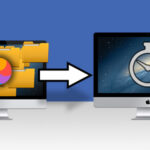Hello, other Mac fans! It’s your trusted tech guide back again, and today we’re going to talk about something that even the most experienced Apple fans hate: the “Your startup disk is almost full” message. Haven’t we all been there? You know that feeling when you try to save a new file, download an important update, or even just take a quick picture, and your beloved Mac shakes its head in disapproval?
But don’t worry! Today, we’re going to go into great detail about the art and science of getting back valuable gigabytes on your Mac System. This is your ultimate resource: a carefully put together guide full of useful tips to Free Up Storage Space and give your digital workspace a new lease on life. We’ll go over the most important techniques, but we’ll also look at some parts of your Mac System that you might not think about that are probably taking up space.
It’s not just about getting rid of a few old downloads. It’s also about making your Mac System run better, making it easier to use, and giving you the space you need to keep creating, exploring, and enjoying everything your Mac has to offer. So, put on your digital cleaning gloves and get ready to go on this journey to a clean Mac System!
Why is it important to free up space on a Mac?
Besides being annoying that you can’t save new files, having low storage space all the time can hurt your Mac System‘s health and performance in a big way. Here are some reasons why it’s so important to Free Up Storage Space on a Mac on a regular basis:
Better Performance: When your hard drive or SSD is almost full, your Mac System has less room to work. This can make your computer run slowly, take longer to load applications, and even freeze up. It’s like trying to get around in a crowded room; it’s much easier and faster when you have enough space to do so.
Easier Software Updates: To download and install macOS updates correctly, you usually need a lot of free space. If you always have trouble with low disk space, you might not be able to install the latest updates. This would leave you open to security threats and missing out on new features.
Improved System Stability: A full hard drive can use up your Mac System‘s resources, which can cause crashes and other problems with stability. Cleaning up space on your Mac System on a regular basis helps it work well.
More Room for What Matters: In the end, clearing out storage space lets you keep the files, apps, and media that are most important to you. It gives you more space for your important papers, music, videos, and photos.
Important Ways to Make Space on a Mac
Let’s get to the point. Here are some simple things you can do right now to Free Up Storage Space on your Mac System:
Take out the trash often.
This may seem obvious, but you’d be surprised at how much data can stay in your Trash. You have to empty the Trash for a file to really be gone.
Practical Tip: Get into the habit of emptying your Trash every day or after you delete a lot of files. Click the Trash icon in your Dock and choose “Empty Trash” from the menu that pops up.
2. Control the Downloads Folder
It doesn’t take long for your Downloads folder to fill up with installers, PDFs, and other files you only needed for a short time.
Helpful Hint: Look through your Downloads folder often and move any important files to better places. Get rid of the rest. You can easily find older files by sorting the folder by date added.
3. Remove apps you don’t use
Apps can use up a lot of space on your device. Check out the apps you have on your Mac System and remove any that you don’t use anymore.
Helpful Hint: To find your apps, open Finder, go to the “Applications” folder, and choose “Size” from the “View” menu. This will show you the biggest apps first. Most of the time, you can uninstall an app by dragging its icon to the Trash.
Some programs, on the other hand, may have their own uninstallers that you can find in the program folder or on the developer’s website. Make sure to find out how to uninstall each app correctly so that all of its files are deleted.
For more information on how to uninstall apps, see our guide: “Complete Guide to Uninstalling Applications on macOS“.
4. Clear the caches for your system and applications
Caches are temporary files that your Mac System and apps make to make things go faster. These caches can get pretty big over time and take up space that could be used for other things.
**Helpful Hint:
User Cache: Open Finder, click “Go” in the menu bar, and then click “Go to Folder…” Type ~/Library/Caches and hit Enter. This will take you to the cache folder for your user account. You can delete the contents of the folders by hand, but be careful not to delete the folders themselves unless you know what they are for.
System Cache: Do the same thing as above, but this time type /Library/Caches (without the tilde). This will open the cache folder at the system level. Again, be careful when deleting files here.
Application-Specific Cache: A lot of apps let you clear their cache from their settings. Look at the settings for the apps you use most often.
Warning: Deleting cache files the wrong way can sometimes cause apps to stop working for a short time. If you have any problems after clearing your caches, try restarting your Mac System.
Get rid of duplicate files
A lot of the time, duplicate files take up space that could be used for something else. Over time, you might end up with copies of photos, documents, and even music files.
Tip: You can use Finder to manually look for duplicate files, but this can take a long time. You might want to use a reliable third-party duplicate file finder app to do the work for you. Before deleting the duplicates, make sure to carefully look over the ones you found.
6. Handle Old and Big Files
Finding and getting rid of big files that you don’t need anymore is a great way to Free Up Storage Space on your Mac.
Useful Tip:
Using Finder: To open a new Finder window, click on “File” in the menu bar and then “New Smart Folder.” In the top right corner, click the “+” button and set the following conditions: “Kind is Any” and then add another rule: “File size” “is greater than” and set a size (e.g., 100 MB). You can also look for older files by adding “Date Created” or “Date Last Opened” as criteria. Look over the results and either delete the files you don’t need anymore or move them to an external storage device.
Using Storage Management: macOS has a built-in tool that can help you find big files. Go to the Apple menu and click on “About This Mac.” Then click on “Storage” and “Manage.” This tool gives you suggestions for making the most of your storage, such as looking at big files.
7. Make the most of your photo library
Your library can take up a lot of space if you use the Photos app.
**Useful Advice:
If you have an iCloud Photos account, go to Photos > Preferences > iCloud and turn on the “Optimize Mac Storage” option. This will keep the full-resolution originals of your photos in iCloud and store smaller, optimized copies of them on your *Mac System*.
Review and Delete: Look through your Photos library often and get rid of any photos or videos you don’t want or that are duplicates.
Clean Up Your Music Collection
Your music library can take up a lot of space, just like your photos. This is especially true if it has lossless audio files.
Helpful Hint:
Get Rid of Unwanted Downloads: If you use Apple Music or another music streaming service, go through your downloaded music and get rid of any albums or playlists you don’t listen to anymore.
External Storage: If your music library is very big, you might want to think about moving it to an external hard drive.
Look over and delete language files
macOS can work with a lot of different languages, but you probably only use one or two. You can get more space on your device by deleting language files you don’t use.
Tip for the Real World: Be careful when using Terminal for this process. Using the wrong commands could cause problems with the system. Before trying to delete language files, look for trustworthy guides. A common command is sudo find /Library/Preferences/ -name "*.lproj" -print0 | xargs -0 rm -rf. Use at your own risk and with great care. Before you try this, you might want to back up your Mac System.
10. Use cloud services and external storage
Moving big files to external hard drives or cloud storage services is a great way to Free Up Storage Space on a Mac System without having to delete them.
**Helpful Hint:
External Hard Drives/SSDs: Buy an external hard drive or SSD to keep big media files, backups, or documents that you don’t use very often.
Cloud Storage: iCloud Drive, Google Drive, Dropbox, and OneDrive are all examples of cloud storage services that offer different levels of storage. Use these services to store files in the cloud and get to them whenever you need them. This will free up space on your Mac System.
Put Big Files Together
Compressing big files, like documents and media that you don’t use very often, can help them take up less space on your computer.
Useful Tip: In Finder, right-click on a file or folder and choose “Compress.” This will make a ZIP file of the items you chose. After that, you can keep or archive the ZIP file and maybe even delete the original. Just make sure you can extract the contents of the ZIP file first.
12. Handle Attachments in Mail
Over time, email attachments, especially those with big files, can add up and take up a lot of space in your Mail app.
Tip: Check your Mail inbox and sent items for big attachments. You might want to save important attachments to your computer or the cloud and then delete the emails (or just the attachments if you need to keep the email content). Some email clients have tools to handle and delete big attachments.
13. Make Login Items Better
Reducing the number of apps that start up automatically when you turn on your Mac can make it more responsive overall, which can sometimes seem like a problem with storage space.
Helpful Hint: Click on Users & Groups in System Preferences, then Login Items. Go through the list and take off any apps that you don’t need to start up when you log in.
14. Think about putting old projects and files in storage.
If you have a lot of old files that you don’t use very often but want to keep, or if you work on big projects, think about archiving them to an external drive.
Tip: Make dated archive folders on an external drive and put old files or projects that are done in them. This keeps your main Mac System drive cleaner and running better.
Restart Your Mac Often
Restarting your Mac System may seem easy, but it can help get rid of temporary files and processes that are taking up space or slowing things down.
Useful Tip: Get into the habit of restarting your Mac every day.
More Tips for Getting More Space on Your Mac
Here are some more advanced ways to optimize your Mac System‘s storage for those who want to learn more:
Using Terminal Commands (for advanced users)
The Terminal app has a lot of useful tools for managing your Mac System, like disk space.
Useful Tip: You can see how big each file and folder is by running commands like du -sh * in a directory. You can use the “find” command with size options to find very large files. Be careful when using Terminal commands, and only do so if you know how to use the command line interface. If you type the wrong command, you could lose data or make your system unstable.
2. Using third-party tools to look at disk usage
There are a number of third-party apps that show you how much space your files and folders are taking up on your disk. This makes it easier to find big files and folders.
Helpful Tip: Use apps like DaisyDisk ([Source: https://daisydiskapp.com/]), GrandPerspective ([Source: http://grandperspectiv.sourceforge.net/]), or Disk Inventory X ([Source: http://www.derlien.com/]) to see your storage in a graph and find files that are taking up too much space.
3. Managing Virtual Memory (for Advanced Users)
Virtual memory is used by macOS, and it can take up disk space. In most cases, swap file management is done automatically, but in some advanced situations, you might want to look into your options. Most people should not try this unless they know a lot about virtual memory.
4. Reinstalling macOS (Last Resort)
If you’ve tried everything else and still can’t find enough space, a clean install of macOS can be a big but helpful fix. This will wipe your hard drive clean and install a new version of the operating system.
Tip: Before you think about reinstalling macOS, make sure you have a full backup of all your important files. For instructions on how to do a clean installation of macOS, see Apple’s official guide ([Source: https://support.apple.com/en-us/HT204904]).
Making Storage Management a Part of Your Daily Life
Making storage management a regular part of your routine is the best way to keep your Mac System’s storage space at its best. Here are some useful tips to add to your daily life:
Every day: Empty your trash.
Every week: Check your Downloads folder.
Once a month, do a quick scan for big or duplicate files. Look over your apps and delete any that you don’t need anymore.
Every three months: Go through your files, including your Photos and Music libraries, in more detail. Think about putting away old projects.
If you follow these steps every time, you can avoid storage problems from happening in the first place and make sure your Mac System keeps running smoothly and efficiently.
Keep your Mac system free of clutter
Cleaning up space on your Mac System isn’t something you do just once; it’s something you need to do on a regular basis to keep your beloved Apple device running smoothly and for a long time. You can take charge of your digital storage, get back valuable gigabytes, and have a faster, more responsive Mac System by following the advice and tips in this guide.
Keep in mind that a clean Mac System makes for a more productive and fun time on the computer. If you take the time to regularly clean up your storage, your Mac will run better, be happier, and be more efficient. Now go out and solve those storage problems!
https://bigezwehotv.rw/trends/







